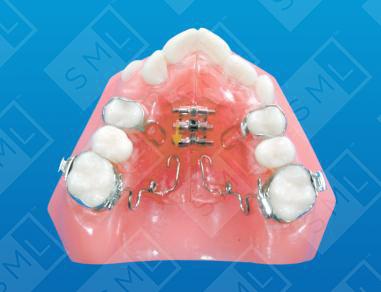The original pendulum appliance was designed to both distalize and rotate the maxillary molars. Once both of these movements were achieved and the molars were in their ideal position, straight wire mechanics would be used to guide the bicuspids into their proper position in the arch. Hilgers modified the appliance by adding an expansion screw in the palatal acrylic. With this simple design change, lateral arch development could also be accomplished. In the Pendex/Hilgers Pendulum, the distalizing springs are fashioned to fit into horizontal sheaths rather than round tubing. The horizontal sheaths add a degree of control that limits any buccal or lingual tipping. To place this appliance, begin by pre-activating the springs -- bend them to a 90-degree angle. Then cement the appliance in two separate units: anterior portion (with bands on the bicuspids for retention) first, then the molars. Once cement is set, pull the activated springs forward and insert them into the lingual sheaths. These TMA springs can produce about 5mm of distal movement in three to four months without the need for interim re-activation. Note: When an increase in arch length and width are both needed, many practitioners prefer to idealize the position of the molars at the same time that they expand the arch. Others prefer to initiate molar distalization several (2 to 4) weeks after transverse changes begin. Either way, once these movements are accomplished, the bicuspids and cuspids will have to be brought back in the arch form one at a time using fixed mechanics.






